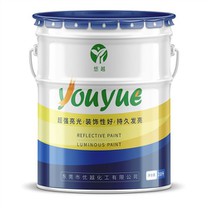To ensure that the coating of high chlorinated anti-corrosive paint effectively protects structures from corrosion and damage, it is crucial to accurately assess the condition of the coating. Through over a decade of experience, we have summarized five methods to help determine whether the coating of high chlorinated anti-corrosive paint is damaged. Combining these five methods can lead to a more accurate evaluation and prevent potential issues.
Here are the five methods, so take good notes:
1. Visual Inspection
Visual inspection is the most direct and straightforward method. Carefully observe the surface of the coating for any visible cracks, bubbles, or peeling. Cracks might be caused by the coating drying and shrinking or by an external impact, while bubbles usually indicate trapped air during the painting process, and peeling suggests a loss of adhesion between the coating and the substrate. The presence of these phenomena is a clear indication of coating damage.
2. Color and Gloss
Changes in color and loss of gloss often indicate that the coating is aging. Long-term exposure to ultraviolet rays, acid rain, or chemicals can cause the color of the coating to fade and its gloss to diminish, affecting not only the appearance but also the protective performance of the coating. Comparing the original color of the coating with its current state can help assess its degree of aging.
3. Tactile Inspection
A tactile inspection can provide additional information about the integrity of the coating. Gently touch the surface of the coating to feel whether it is smooth and uniform. A rough or uneven surface often indicates that the material beneath the coating has begun to corrode or that the coating itself has defects. This method is simple and effective for quickly identifying potential issues.
4. Tool Inspection
Inspecting with tools, such as lightly scratching the surface of the coating with a blade or a steel needle, can more accurately assess the coating's resistance to damage. If the tool easily penetrates the coating, this indicates that the coating has become fragile and cannot effectively protect the material beneath. This inspection method is suitable for cases where there is suspicion of severe damage to the coating.
5. Edges and Joints
The edges and joints of the coating are the areas most susceptible to damage, so they require special attention. Check these areas for signs of cracks, peeling, or corrosion. These signs indicate that moisture and contaminants may have penetrated beneath the coating, threatening the integrity of the structure.
Consequences of Coating Damage
Damage to the coating of high chlorinated anti-corrosive paint not only affects the aesthetics of the structure but, more importantly, reduces the coating's anti-corrosive performance, leading to corrosion of the structure itself. This corrosion can further decrease the structural strength and, in some cases, cause serious structural damage. Therefore, regular inspection and maintenance of the coating, timely detection, and repair of damage are crucial for protecting assets and extending their service life.
Summary
By comprehensively applying the above inspection methods, the condition of the high chlorinated anti-corrosive paint coating can be effectively evaluated. Once coating damage is detected, immediate action should be taken to repair it, preventing more severe corrosion and structural damage. Regular coating inspection and maintenance are key to ensuring the structure remains in good condition over the long term.





